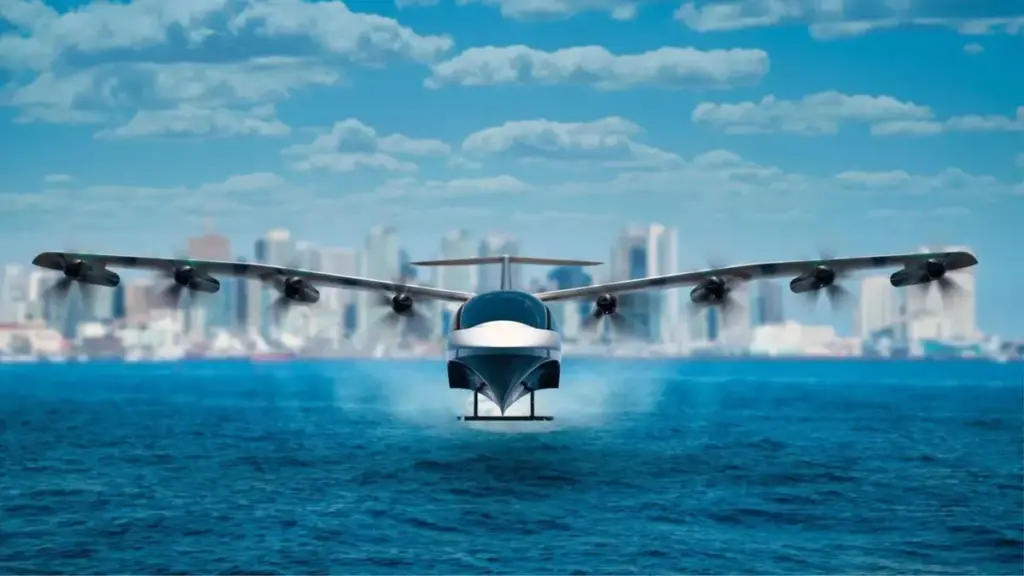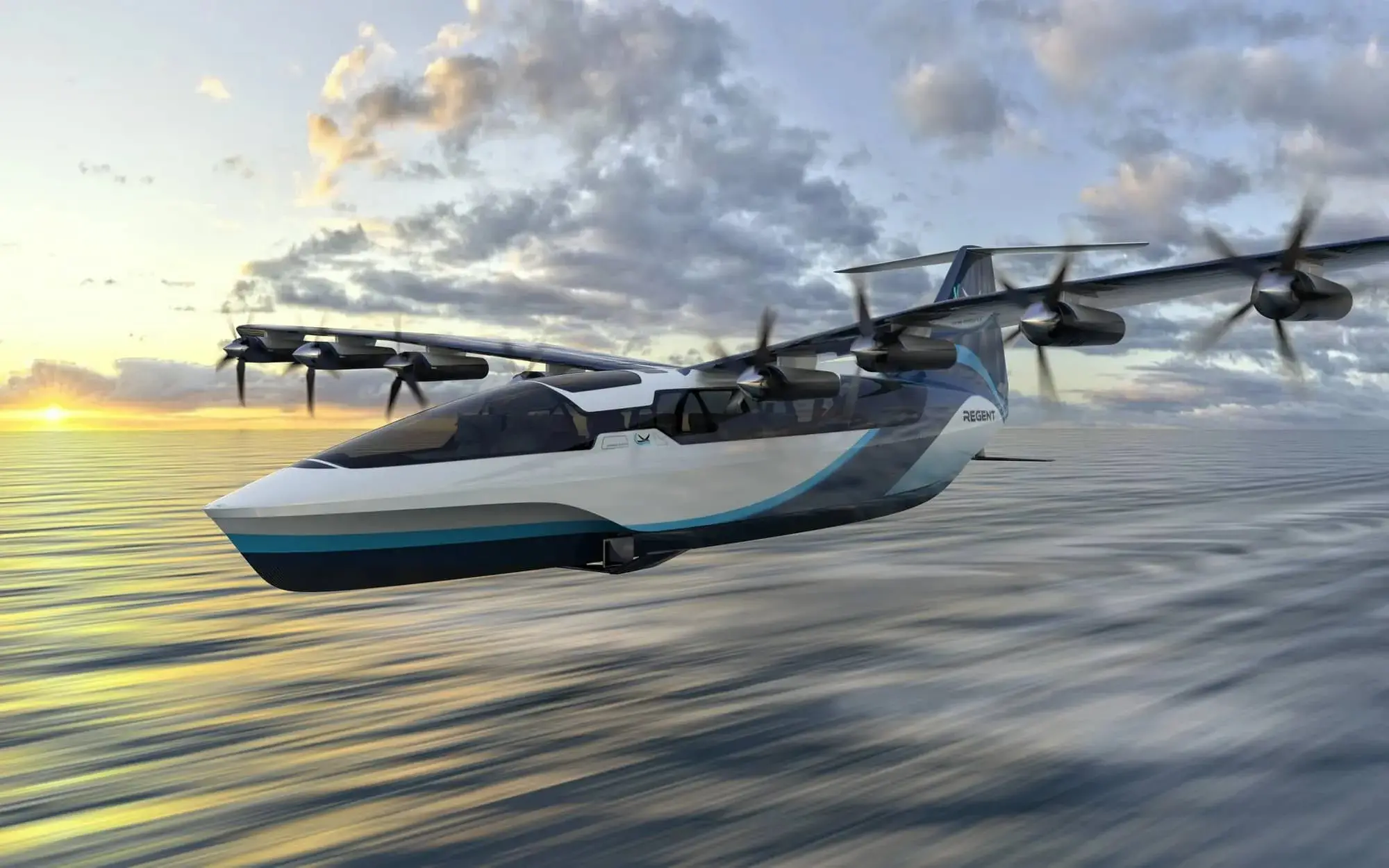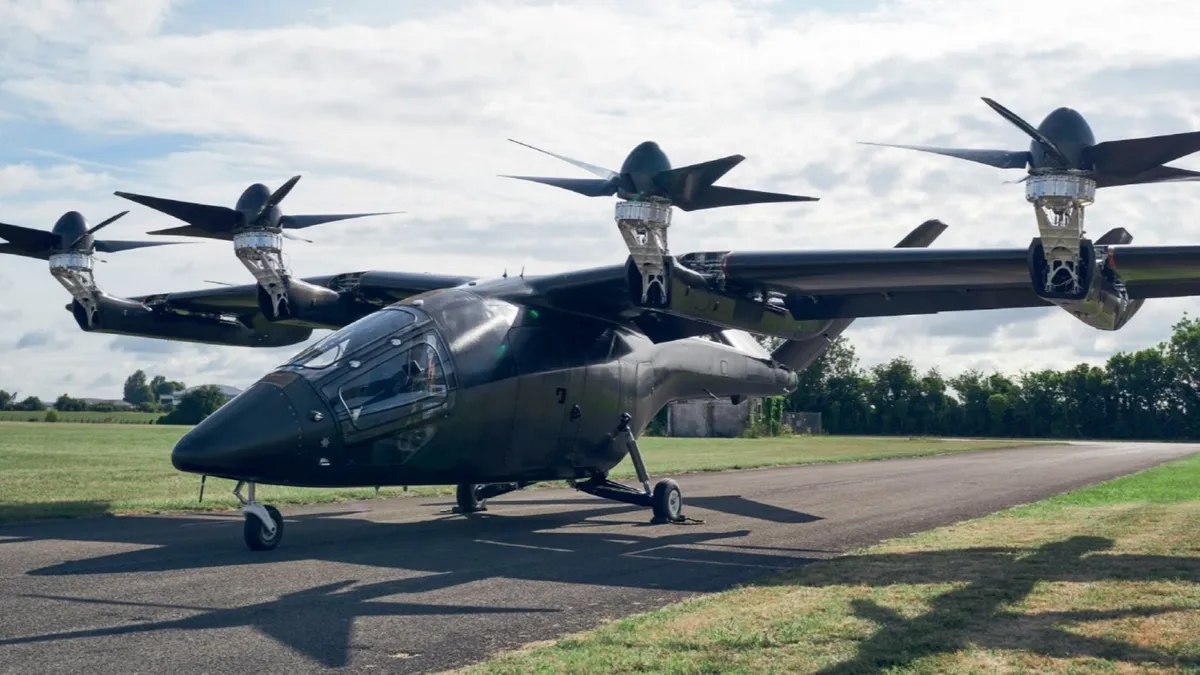The first round of test flights with a Regent electric sea glider was conducted without incident. This exemplifies her prowess and confidence in bringing forth the new age of marine mobility that her “Float-foil-fly” quest promises.
The first set of test flights of Regent’s electric sea glider has been completed, making it the first vehicle to transition from controlled hydrofoil to wing-borne flight.
Unless aircraft are very buoyant, flying low to the earth is the most fuel-efficient option. This occurs because the wings have a layer of air between them and the earth.
Ground-effect aircraft, which are confined to flying over water due to height limits, may only fly over the ocean. It’s not a good idea to take the danger of flying over land.
What’s up?
A video of Regent’s groundbreaking Seaglider prototype in testing flight has just been made public. The vehicle provides unprecedented quickness and range near coastlines. The machine is built to make use of both ground effect and hydro-foiling, two distinct but complementary methods of increasing efficiency.
Despite early promise, wing-in-ground-effect (WIG) aircraft like the Soviet-era Ekranoplan have not become a common means of transportation.
Incorporating the latest technological advancements into its design, the air cushion between the wings and the surface provides these low-flying birds with significantly more lift and efficiency than regular planes flying higher in the air, so long as they remain within their wingspan of the surface below.
Despite being able to circumvent the height limit, ground-effect aircraft cannot safely conduct normal operations over land. That’s why you’ll often find them around some kind of body of water.
Mike Klinker, mad co-founder and CTO of Regent, said in a news statement that “People have been attempting to make wing-in-ground effect vehicles viable for 60 years, and in 15 months, we have gone from a drawing on a napkin to the first successful flight”.
Although the economics of these machines have traditionally been less appealing, their electrification of them could be the factor that changes everything. However, due to the fact that the battery does not have a high level of efficiency, the boats are unable to sail for significant distances via the difficult medium of water.
In addition, previous experience with early electric aircraft revealed that there were certain limitations to the number of passengers that could be accommodated. When Regent took this into consideration, it became abundantly evident that the efficiency of the ancient ground-effect vehicle, when supplemented with technology that is more recent, may give a competitive edge.
In addition, the development of this apparatus has occurred at a startlingly quick rate. A doodle on the back of a napkin was developed into a flying quarter-scale airplane in only 15 months, which led to sales of $7 billion.
About Regent Seaglider
In order to be able to taxi gently while on the water and only rise off the surface of the water when it accelerates, Regent’s Seagliders were designed to be able to be “fake boat” like.
The Seaglider can generate lift to move through the water, which lowers drag and uses less energy to maintain its position above the water’s surface.
Once the aircraft is in the air, the hydrofoils retract. This makes taking off from water simpler and enhances fuel economy by reducing drag.

Emission-free transportation with a 180 mph top speed and seating for up to 14 passengers will be made possible by an electric drivetrain. They claim that this new kind of aircraft will be quick and operate for half as much money.
The concept is expandable, so larger versions may be made as the number of passengers rises. In the near future, Regent intends to build airplanes with at least 150 seats.
The market is backing the movement now that Regent’s strategy is succeeding. Astonishing preorders for bespoke aircraft maker Regent reach $7 billion. Additionally, they presented their bespoke 18-foot Seaglider prototype.
The car in the video accelerates and decelerates as each incident takes place. Additionally, they travel on various watercraft, including hydrofoils, and fly through the air.
The hydrofoil things are elegant, and even though it was all captured under clear skies and calm seas, we’re interested to know how it must feel inside as they slow down. The landing should be smooth, as opposed to a seaplane’s usual jarring landing.
As stated by Klinker, “Regent is the first team in history to overcome the deficiency of low wave tolerance with past designs by combining high-speed hydrofoils with ground-effect flight – a crucial innovation that will revolutionize coastal transit. No vehicle in history can match the combined wave tolerance and speed of our sea glider.”
How Seaglider works?
The V-shaped Regent’s sea glider lifts the cabin out of the waves to enable comfortable floating above the water’s surface. It reduces its drag substantially, which minimizes the energy needed to push through the water.
The hull’s design also significantly lowers drag, which lowers the energy needed to push through the water and makes it easier to attain takeoff speed for wing-borne flight. The hydrofoils fold away when the airplane is raised out of the water and descends for a landing.
Future of Regent’s Seaglider
In order to start manned testing by 2024, Regent will next build a full-scale prototype with a 65-foot (19.8 m) wingspan. For this portion of the project, they have already raised around $18 million.
By 2025, when the Seaglider is expected to become widely used, it will be able to transport people.
The business has made a large financial commitment and has previously shown its capacity to create a project fast. With this approval, it will have the upper hand against a brand-new electric VTOL aircraft enterprise.
Ending Notes
The above article talks about the regent sea glider, its features, its details, its future, and a lot of things about it. Let’s see how well this combination of airplane and boat baffles us with its electric power engine.





